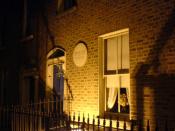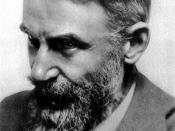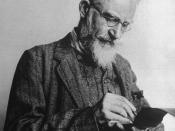In 1896, George Bernard Shaw wrote 'Candida', which became his first successful work as a playwright after its first performance the following year (1897) and its publication two years later (1898).
Set in the north east suburbs of London, the three-act play is presented as a comedy in which the comfort of the Reverend Morrell in his marriage to Candida is threatened by the arrival of the young poet Marchbanks. As the story develops, these two men fight for the love of Candida, who is forced to choose between one of them. At the end, she decides to stay with her husband, arguing that he is the weakest of the two and thus, the one who needs her most.
Nevertheless, apart from the amusing love triangle portrayed in the play, it is also possible to identify, at a higher level of analysis, the presence of those elements which are often considered to be Shaw's major ideas in writing: Socialism, Feminism and the concept of Life Force.
Out of those three notions, that of the Socialism is by far the most evident, since it appears in the story itself as the basis of Morrell's political ideas. This is made clear from the beginning of the play, basically in two moments. First, when describing the elements in the room, among which we find "Fabian Essays, a Dream of John Ball, Marx's Capital, and half a dozen other literary landmarks in Socialism" (Shaw, 1898). Later, and more explicitly, when Morrell is presented as "a Christian Socialist clergyman of the Church of England, and an active member of the Guild of St. Matthew and the Christian Social Union" (Shaw, 1898). In this way the author, having been an active member of the Fabian Society, introduces his belief that "the ordering of society should be...


